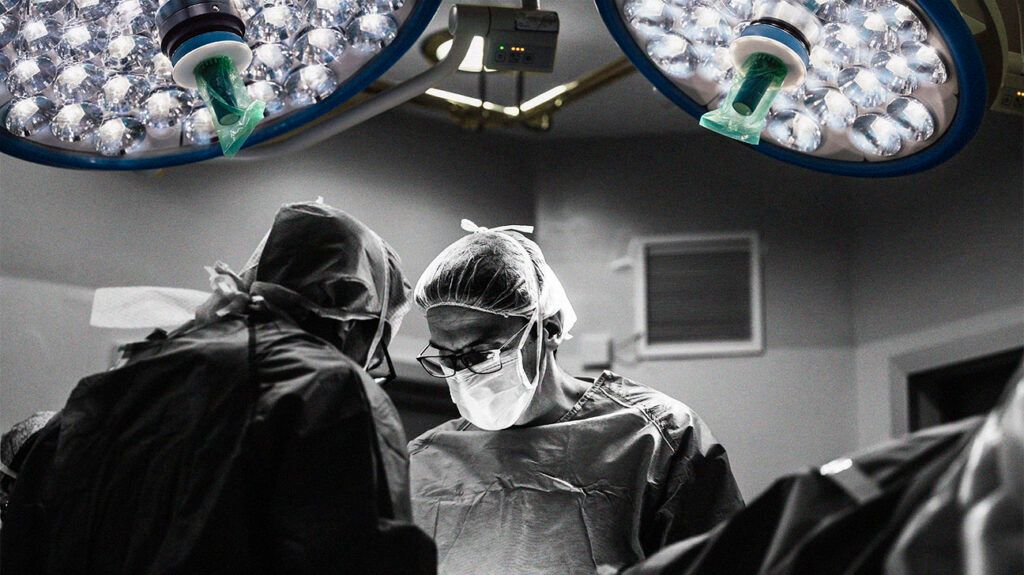Cholecystitis, or gallbladder inflammation, can sometimes cause jaundice if something blocks the flow of bile from the gallbladder.
Cholecystitis refers to inflammation of the gallbladder. There are several possible causes, the most common of which is gallstones.
Sometimes, gallstones pass on their own. However, when they get stuck and block the ducts through which bile usually travels, this can lead to jaundice.
This article will discuss jaundice and cholecystitis, signs, treatment, outlook, and frequently asked questions.

Jaundice is a yellowing of the skin and eyes from an accumulation of excess bilirubin in the body.
Bilirubin is a waste product that results from the death of old or damaged red blood cells.
Usually, the liver converts bilirubin into a water-soluble state known as conjugated, or direct bilirubin. This allows it to mix with bile and exit the body through the stool and urine.
The liver makes bile, which the gallbladder then stores. During food intake, the gallbladder releases bile to help digest certain foods.
Cholecystitis can cause jaundice because of how it interferes with how the gallbladder usually secretes bile.
The gallbladder can concentrate bile and form sludge or stones, which can cause blockages in the typical drainage of bile.
The gallbladder wall can then become swollen and inflamed, which doctors call cholecystitis.
The most common cause of cholecystitis is gallstones. Other possible causes include:
- bile duct cancer
- pancreatic cancer
- prolonged fasting
- immune deficiency
- vasculitis
Jaundice makes a person’s skin and the whites of their eyes look yellow, though skin color changes may be less noticeable in darker skin.
Some of the signs of jaundice and cholecystitis are the same, including:
Symptoms of cholecystitis also include:
- oily or fatty stool
- fever
- chills
- pain in the upper right abdomen after eating fatty or spicy foods
- nausea
- vomiting
Since removed gallstones often recur after about
Doctors can perform a laparoscopic cholecystectomy, which involves removing the gallbladder through a small incision. They can also perform an open cholecystectomy, which involves a larger incision, and bile duct explorative procedures to remove stones.
For those unable to undergo surgery, doctors may recommend placing a cholecystostomy tube. They insert this tube from the skin in the upper abdomen, and it drains the contents of the gall bladder.
If a bacterial infection is present, doctors can prescribe antibiotics.
Without treatment, acute cholecystitis can progress to gallbladder tissue death and perforation. Gallbladder perforation refers to a hole in the gallbladder, and this can lead to sepsis, shock, and death.
However, with surgery to remove the gallbladder, the outlook is usually positive.
There are some risks relating to surgery:
In addition, about
The following are answers to common questions about jaundice and cholecystitis.
What happens to the liver in cholecystitis?
When acute cholecystitis occurs with gallstones,
A cause is gallbladder infection that reaches the liver through lymph circulation or the bile duct.
Which bilirubin is elevated in cholecystitis?
Cholecystitis features elevated conjugated bilirubin levels. This is the bilirubin that the liver has converted to a water-soluble form, in preparation for secretion via bile into the stool.
Because cholecystitis hinders the gallbladder’s ability to secrete bile for digestion and waste elimination, the conjugated bilirubin builds up instead of leaving the body.
How do doctors diagnose cholecystitis?
To diagnose cholecystitis, doctors will take a complete medical history and perform a physical examination, blood tests, and imaging tests, which may include ultrasound, CT scan, or hepatobiliary scan.
Cholecystitis can sometimes cause jaundice. This can occur when the liver sustains an injury or when gallstones prevent bile from clearing bilirubin from the body.
Doctors can treat cholecystitis with surgery and prescribe antibiotics if an infection is present.
While sometimes gallstones can pass on their own, untreated cholecystitis can lead to severe consequences if it progresses.
